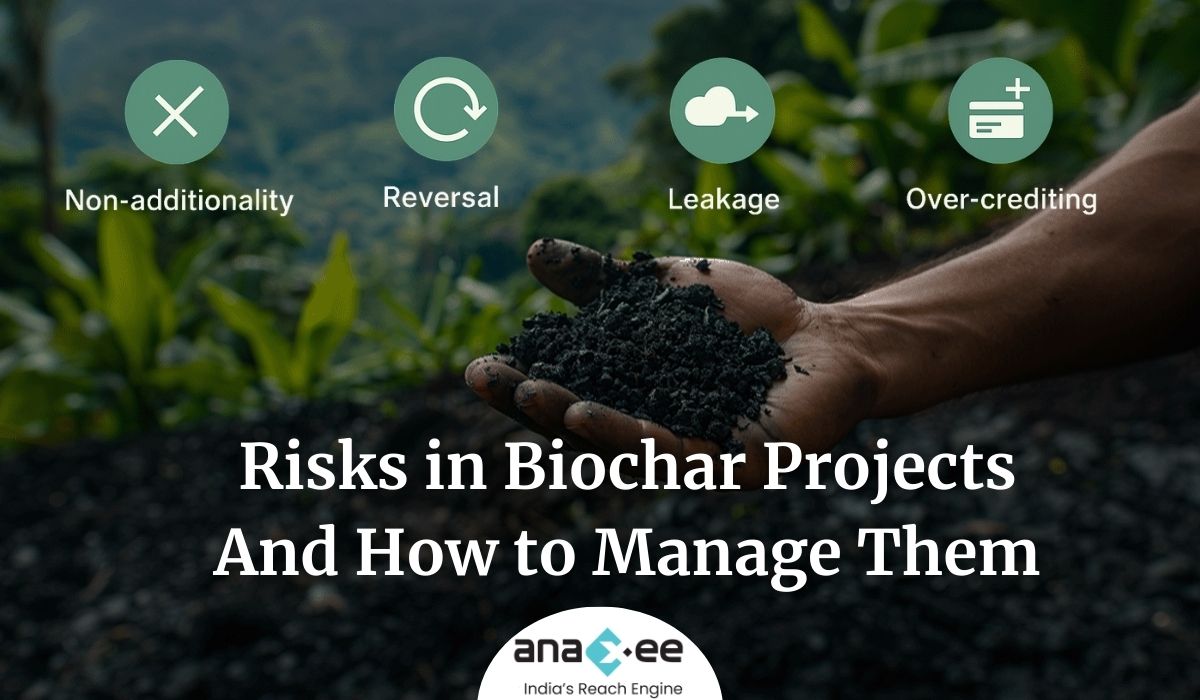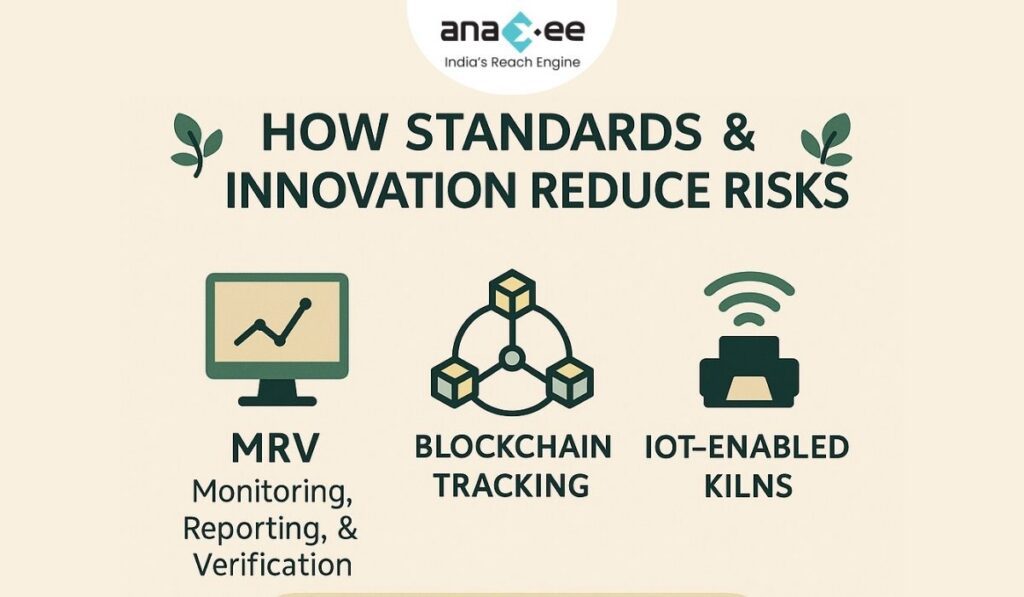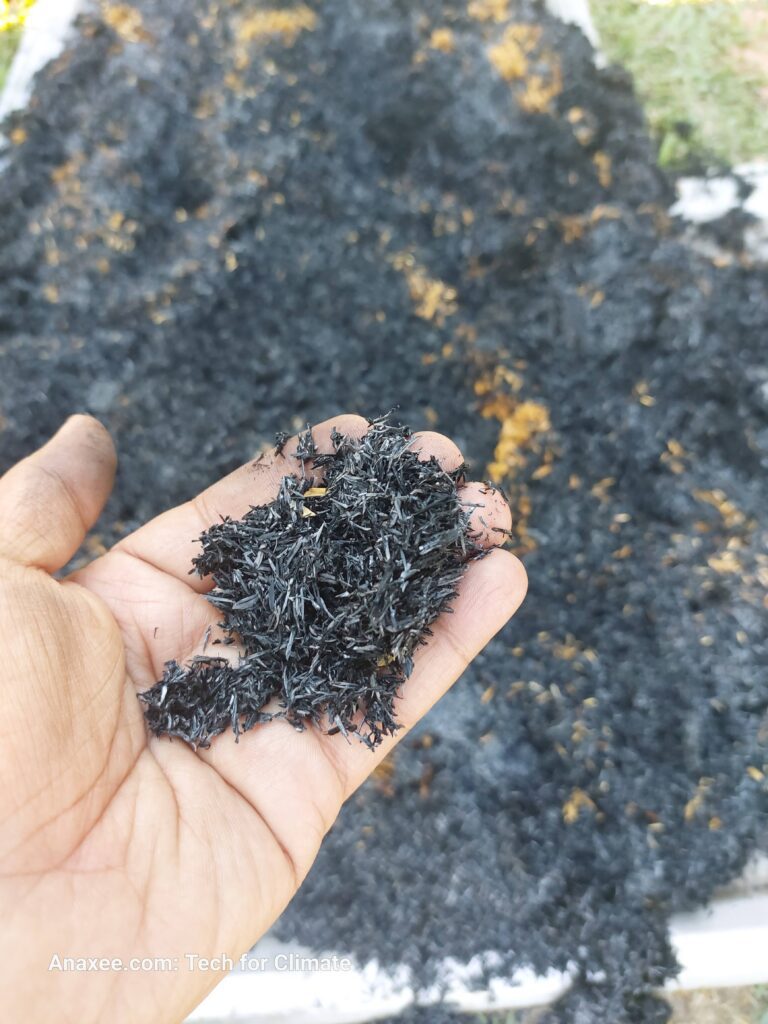BLOG

Risks in Biochar Projects and How to Manage Them
Risks in Biochar Projects and How to Manage Them
Introduction
The global carbon market is placing increasing trust in biochar as one of the most promising tools for carbon dioxide removal (CDR). In 2023–2024, biochar accounted for more than 90% of all durable carbon removal deliveries in the voluntary carbon market.
But like any climate solution, biochar is not without risks. Critics often ask: Is the carbon really locked away? What if projects exaggerate? Can small kilns in rural areas be trusted to deliver verified credits?
These are important questions. A strong carbon market needs credibility, transparency, and risk management. This blog explores the main risks in biochar projects — and how innovators, developers, and standards are addressing them.
1. Non-Additionality Risk
What it means:
For a project to generate carbon credits, it must prove that it would not have happened without carbon finance. If the activity is “business as usual,” then credits are not additional.
How it applies to biochar:
-If a farmer already makes biochar for soil improvement without carbon finance, issuing credits for the same activity risks double counting.
-Large industrial biomass users might switch to biochar anyway due to regulation or cost advantages, raising questions about additionality.
How to manage:
-Rely on clear baseline studies to show the biomass would have otherwise decomposed or been burned.
-Require third-party verification at project registration.
-Standards like Verra VM0044 and Puro.earth mandate strict baseline documentation.
2. Reversal Risk
What it means:
Carbon stored today could be released tomorrow. In forestry projects, this often happens when trees burn or are cut down.
Why biochar is stronger:
Biochar is much more chemically stable than biomass. Its carbon structures resist microbial decay, with lifespans of hundreds to thousands of years.
But risks still exist:
-Poorly made biochar (low pyrolysis temperatures, high volatile matter) may degrade faster.
-Fire in storage sites could destroy stockpiled biochar before application.
-Incorrect use in soils may reduce permanence.
How to manage:
-Follow strict pyrolysis quality guidelines (high-temperature production).
-Apply biochar quickly to soils or construction materials instead of stockpiling.
-Conduct lab tests on stability indicators like the H/C ratio.
-Use buffer pools (extra credits held in reserve) as insurance.
3. Over-Crediting Risk
What it means:
Projects may issue more credits than the actual carbon removed.
Causes in biochar:
-Misreporting feedstock origin (using biomass that would not have released CO₂ anyway).
-Inflated assumptions about carbon stability.
-Errors in mass-balance calculations of biomass in vs. biochar out.
How to manage:
-Registries require conservative factors in calculations.
-Third-party auditors must validate data before credits are issued.
-Digital MRV tools (like Planboo’s mobile MRV) ensure field-level traceability.
4. Leakage Risk
What it means:
A project reduces emissions in one place but causes an increase elsewhere.
Examples in biochar:
-Diverting crop residues from animal fodder to pyrolysis could force farmers to use alternative feed with its own emissions.
-Using wood that would otherwise have been used in local industries.
How to manage:
-Allow only true waste biomass as feedstock.
-Conduct surveys of local uses of residues.
-Require projects to show that no alternative market is disrupted.
5. Negative Social or Environmental Impacts
Concerns:
-Low-tech kilns may release methane or smoke, harming local air quality.
-If biochar demand drives biomass plantations, it could compete with food or forests.
-Communities may not benefit if projects are highly centralized.
Solutions:
-Train operators in clean pyrolysis techniques.
-Adopt artisanal methodologies (like CSI Artisan) that focus on smallholder inclusion.
-Monitor co-benefits: jobs created, crop yield increases, gender participation.
Case Study:
-Varaha and IIT Bombay studied methane risks in poorly run pyrolysis. Findings led to improved kiln design.
-Carboneers in Ghana provide 500% income boosts for women by involving them in small-scale biochar projects.
6. Delivery Risk
What it means:
The project promises credits but fails to deliver on time.
Why it happens:
-Feedstock shortages due to crop failure.
-Technical problems in reactors.
-Over-ambitious targets.
How to manage:
-Diversify feedstock sources.
-Use modular reactors for flexibility.
-Sign smaller offtake contracts at the start, then scale.
-Build partnerships with farmer networks (like Anaxee’s Digital Runner network) for reliable biomass supply.
7. Reputation and Market Risks
Concerns:
-Negative media coverage about “low-quality credits” can affect all biochar projects, even good ones.
-Buyers are cautious after controversies in REDD+ and cookstove credits.
Solutions:
-Radical transparency in project reporting.
-Use digital dashboards for buyers to track biochar production in near real-time.
-Third-party endorsements from scientific bodies.
8. How Standards and Innovation Reduce Risks
The good news is that biochar risks are manageable — and are already being managed.
-Standards (Verra, Puro, Isometric, CSI) provide strict guardrails.
-Innovation (digital MRV, blockchain tracking, IoT-enabled kilns) increases trust.
-Community-first models ensure social acceptance and equitable benefit-sharing.
Together, these approaches make biochar one of the lowest-risk removal credits compared to other methods like forestry or enhanced weathering.
Conclusion
Biochar is not risk-free, but its risks are identifiable, manageable, and often lower than other carbon removal pathways.

-Non-additionality is solved with clear baselines.
-Reversal risk is minimized through stable chemistry.
-Over-crediting is prevented by conservative methodologies.
-Leakage is reduced by strict feedstock rules.
-Delivery is secured through diversified networks.
For investors, corporates, and communities, this means biochar credits can be a trusted part of net zero strategies. The key lies in good governance, transparent MRV, and community-centered implementation.
In short: biochar projects succeed when risks are acknowledged, measured, and managed — not ignored.
About Anaxee:
Anaxee drives large-scale, country-wide Climate and Carbon Credit projects across India. We specialize in Nature-Based Solutions (NbS) and community-driven initiatives, providing the technology and on-ground network needed to execute, monitor, and ensure transparency in projects like agroforestry, regenerative agriculture, improved cookstoves, solar devices, water filters and more. Our systems are designed to maintain integrity and verifiable impact in carbon methodologies.
Beyond climate, Anaxee is India’s Reach Engine- building the nation’s largest last-mile outreach network of 100,000 Digital Runners (shared, tech-enabled field force). We help corporates, agri-focused companies, and social organizations scale to rural and semi-urban India by executing projects in 26 states, 540+ districts, and 11,000+ pin codes, ensuring both scale and 100% transparency in last-mile operations.



